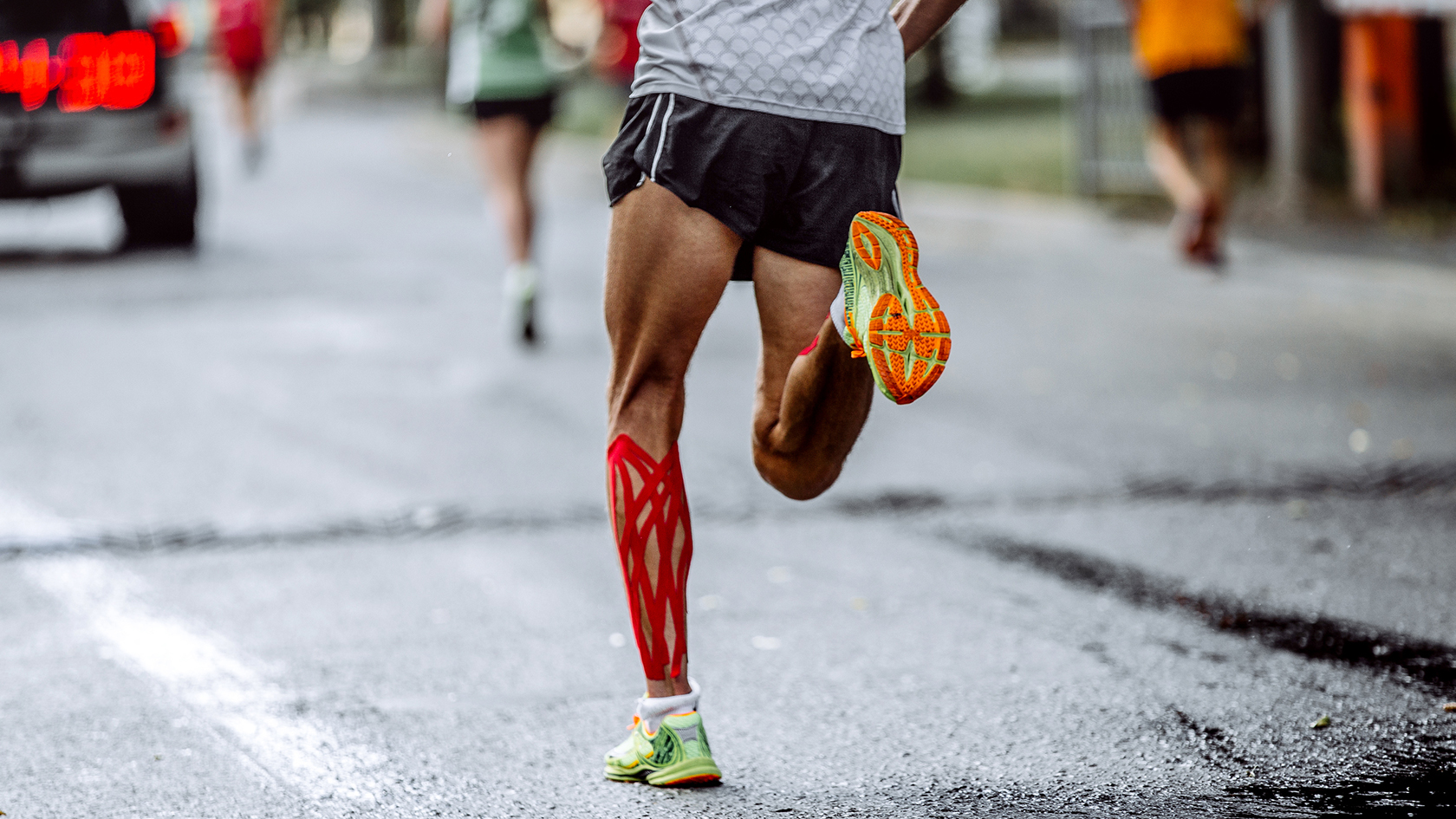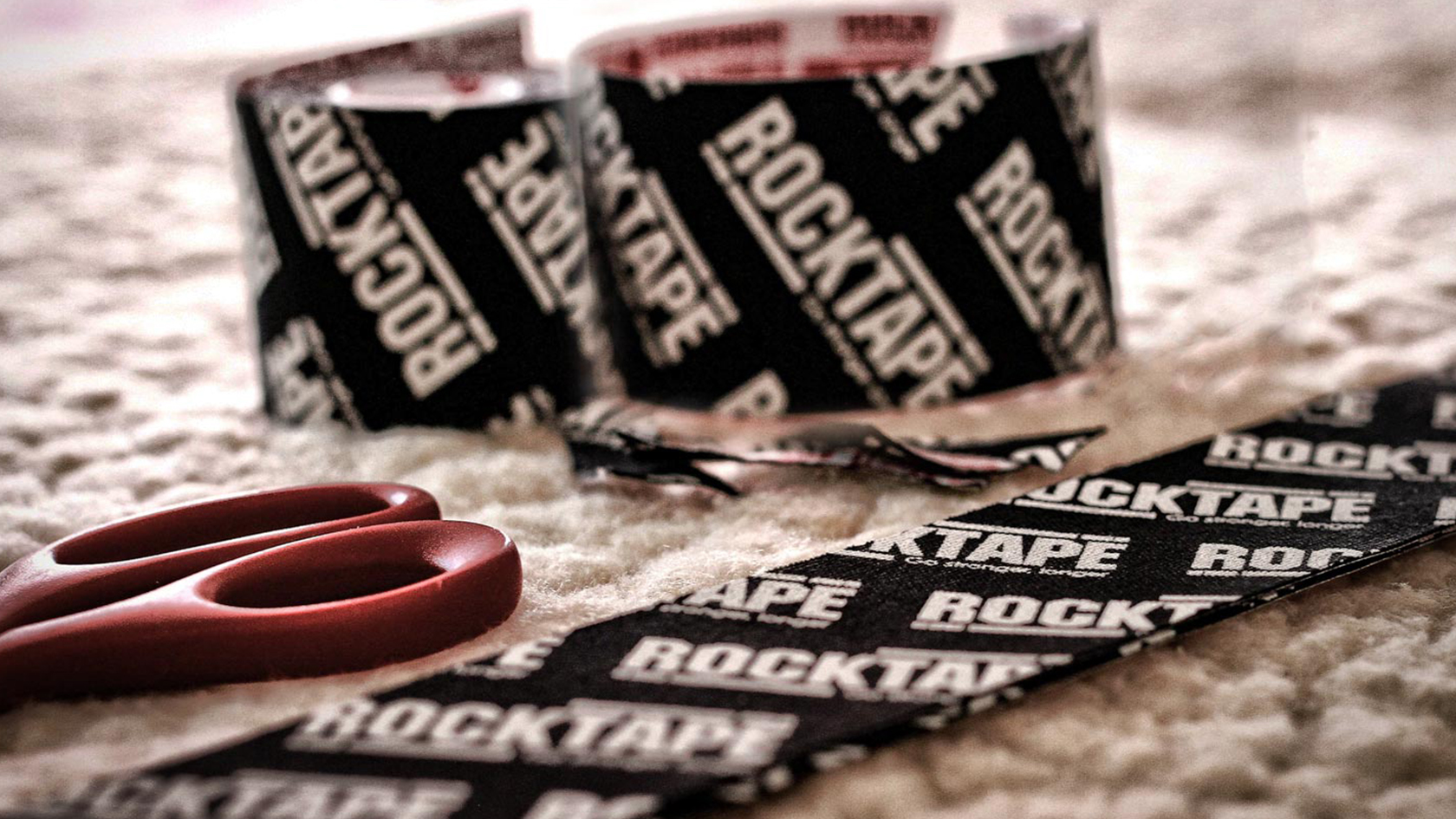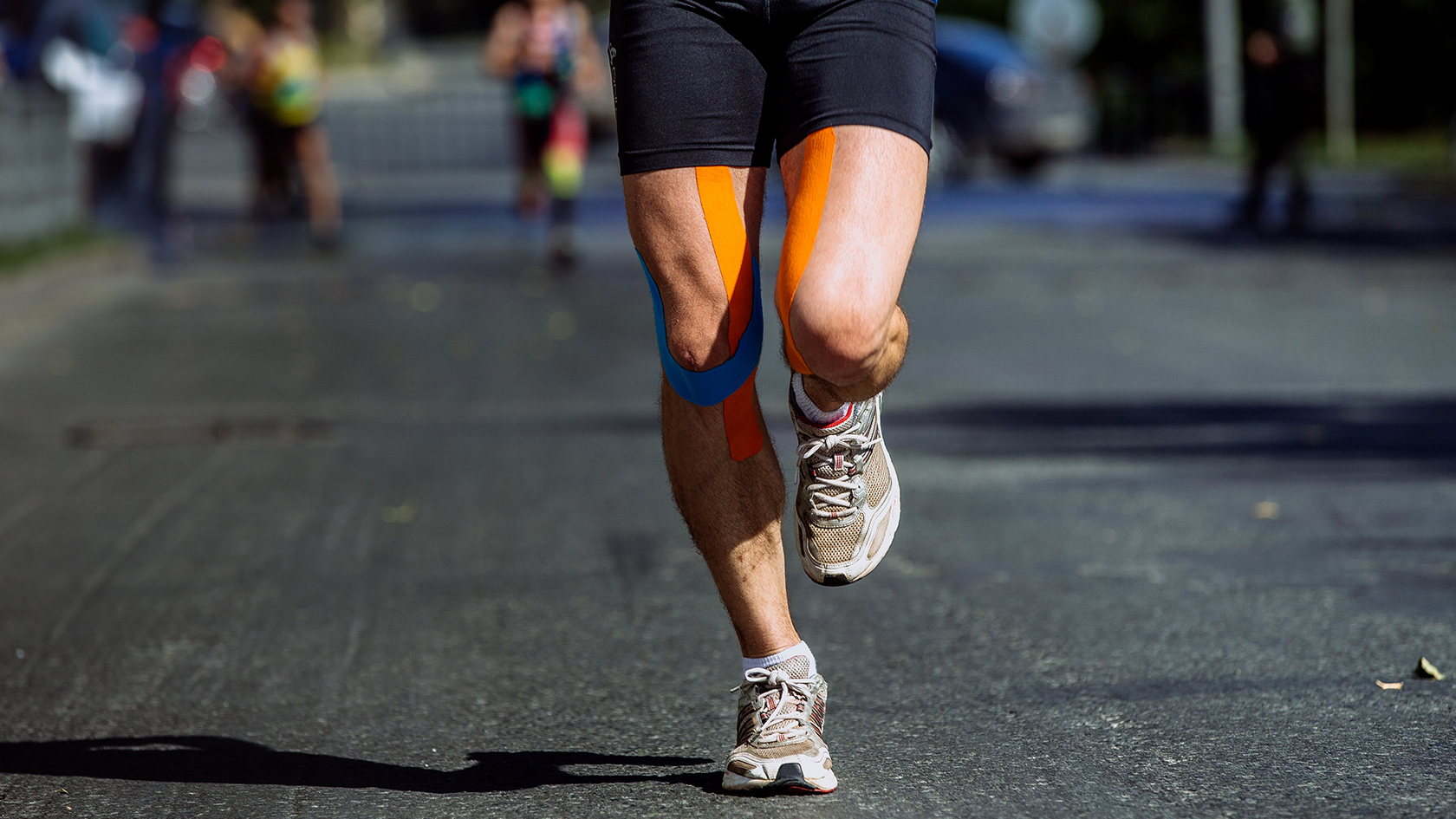Kinesiology taping has become a familiar sight at sporting events, gyms, and even in clinics, with those colourful strips of tape criss-crossing knees, shoulders, and backs. But what exactly is kinesiology tape, how does it work, and is it just for athletes?
What Is Kinesiology Taping?
Kinesiology taping (often called “k-taping” or “KT tape”) is a therapeutic technique that uses a specially designed elastic tape to support muscles, joints, and soft tissues. Unlike traditional rigid sports tape, kinesiology tape is stretchy, breathable, and designed to mimic the elasticity and thickness of human skin. It was first developed by Japanese chiropractor Dr. Kenzo Kase in the 1970s, with the aim of supporting the body’s natural healing processes while allowing full range of motion.
Kinesiology tape is made from high-quality cotton with a hypoallergenic acrylic adhesive. It’s latex-free, making it suitable for sensitive skin, and is typically worn for several days at a time—even during showers or swimming
What is Kinesiology Tape?
- The tape is made of tightly woven elasticated cotton fibres.
- The glue on the tape is acrylic, highly durable and waterproof - so tape can be worn for up to a week withstanding vigorous movement, sweat and total emersion in water.
- The aim is that tape matches and augments the stretch characteristics of your skin and muscles.
How Does Kinesiology Tape Work?
The unique elasticity of kinesiology tape allows it to gently lift the skin, creating a small space between the skin and the underlying tissues. This “lifting” effect is believed to help:
- Improve blood and lymphatic circulation
- Reduce swelling and inflammation
- Relieve pain by reducing pressure on pain receptors
- Support and stabilise muscles and joints without restricting movement
- Enhance proprioception (body awareness) and muscle function
When applied correctly, kinesiology tape can influence a variety of physiological structures—including microcirculation, neuroreceptors, lymph vessels, and fascia. This is why it’s used not only for sports injuries, but also for a wide range of musculoskeletal and even some internal conditions.
What Are the Benefits of Kinesiology Taping?
Kinesiology taping is popular for its versatility and potential benefits, which include:
- Pain Relief → By reducing pressure on nerve endings and improving circulation, kinesiology tape can help manage acute and chronic pain.
- Reduced Swelling and Inflammation → The tape’s lifting action helps drain excess fluids and reduce swelling, making it useful for injuries and post-surgical recovery.
- Support Without Restriction → Unlike rigid tape, kinesiology tape supports muscles and joints while allowing you to move freely—ideal for athletes and active individuals.
- Enhanced Muscle Activation and Recovery → Taping can stimulate weak muscles, relax overactive muscles, and improve overall function.
- Improved Posture and Movement Patterns → The sensory feedback from the tape can help retrain muscles and correct poor posture or movement habits.
- Faster Recovery → By supporting the body’s natural healing processes, kinesiology tape can speed up recovery from injuries and overuse
Who Can Use Kinesiology Tape?
Kinesiology tape is remarkably versatile and can be used by a wide range of individuals, not just professional athletes. While it’s common to see elite runners, footballers, and Olympic competitors sporting the colourful strips, the benefits of kinesiology taping extend far beyond the sports field. Anyone experiencing muscle soreness, joint discomfort, or soft tissue injuries may find kinesiology tape helpful as part of their recovery or pain management strategy.
For recreational athletes and fitness enthusiasts, kinesiology tape offers support during training, competitions, or even everyday workouts. It can help manage minor strains, overuse injuries, and muscle fatigue, allowing active individuals to maintain their routines with greater comfort and confidence. Office workers and those with sedentary lifestyles can also benefit, especially if they suffer from postural issues, repetitive strain injuries, or tension in areas like the neck, shoulders, or lower back. In these cases, kinesiology tape can provide gentle support, encourage better posture, and reduce muscle tension caused by prolonged sitting or repetitive movements.
Children and older adults may also use kinesiology tape, provided it is applied correctly and under appropriate supervision. For children, taping can assist with certain developmental or musculoskeletal conditions, while older adults might use it to support joints affected by arthritis or age-related wear and tear. Pregnant women sometimes use kinesiology tape to help manage lower back pain or provide gentle abdominal support, though it’s important to consult a healthcare professional before use.
Individuals recovering from surgery or injury often incorporate kinesiology taping into their rehabilitation programs. The tape can help manage swelling, support healing tissues, and provide a sense of stability during the recovery process. However, it’s crucial that taping in these situations is guided by a qualified physiotherapist or healthcare provider to ensure safety and effectiveness.
Common Conditions Treated With Kinesiology Tape
Kinesiology taping can be used for a variety of conditions, including:
- Muscle strains and sprains
- Tendonitis (e.g., Achilles, patellar, tennis elbow)
- Ligament injuries
- Swelling, bruising, and lymphoedema
- Back, neck, and shoulder pain
- Knee pain (e.g., runner’s knee, IT band syndrome)
- Plantar fasciitis
- Carpal tunnel syndrome
- Postural correction
- Scar management
How to Apply Kinesiology Tape
Applying kinesiology tape correctly is key to its effectiveness. Here’s a general guide:
- Clean and Dry the Skin: Remove oils, lotions, and sweat for better adhesion.
- Cut and Round the Edges: This helps prevent peeling.
- Apply With the Right Tension: Depending on the goal (support, decompression, etc.), the tape may be applied with varying degrees of stretch.
- Smooth the Tape: Rub the tape to activate the adhesive, which is heat-sensitive.
- Avoid Wrinkles and Gaps: These can cause irritation or reduce effectiveness.
There are many taping techniques—such as “I,” “Y,” and “fan” shapes—each designed for specific muscles or injuries. For best results, follow professional advice or instructional videos from trusted sources.
How Long Does Kinesiology Tape Last?
Kinesiology tape is designed to be worn for several days, typically between 3 and 7 days, depending on the brand, application area, and activity level. It’s water-resistant, so you can shower or swim with it on. If the tape starts to peel or causes discomfort, it should be removed and replaced.
Are There Different Types and Colours of Kinesiology Tape?
Yes! Kinesiology tape comes in a range of colours and patterns. While the base material and adhesive are the same, colours were originally chosen based on colour therapy principles. Today, most people choose colours for aesthetics or visibility, and some therapists may use different colours for specific taping techniques.
There are also different types of tape, such as:
- Standard cotton tape (most common)
- Synthetic or sports-specific tape (more durable, better for water sports)
- Pre-cut strips vs. rolls
All are designed to provide the same therapeutic benefits, so the choice often comes down to personal preference or specific activity needs.
Is Kinesiology Tape Waterproof?
Yes, most kinesiology tapes are water-resistant, allowing you to shower, swim, or sweat without worrying about the tape coming off. The adhesive is activated by body heat and designed to withstand daily activities.
Are There Any Risks or Contraindications?
Kinesiology taping is generally safe, but there are some precautions:
- Do not apply to broken, irritated, or infected skin.
- Avoid taping over acute injuries without a proper diagnosis.
- Not suitable for people with certain skin conditions or allergies.
- Not recommended for use on patients with a fever.
- If you experience itching, redness, or discomfort, remove the tape immediately.
Always consult a healthcare professional if you’re unsure, especially if you have underlying health conditions.
So now you know how Kinesiology Taping works, find out how to use it with our expert guide - How to Use Kineseology Tape
Kinesiology taping is more than just a trend—it’s a versatile, evidence-informed tool for supporting the body’s natural healing processes, enhancing performance, and managing pain and swelling. Whether you’re a dedicated runner, a weekend hiker, or someone looking for relief from everyday aches, kinesiology tape offers a flexible and accessible option.
As with any health intervention, kinesiology taping is most effective when used as part of a broader approach to injury prevention and recovery. If you’re new to taping, consider consulting a physiotherapist or sports therapist for guidance on technique and application.
So, the next time you spot those colourful strips on the track or in the gym, you’ll know exactly what they’re all about—and perhaps even be inspired to give kinesiology taping a try yourself.
FAQs
Kinesiology tape is typically made from high-quality cotton with a hypoallergenic acrylic adhesive. It’s latex-free and designed to be breathable and water-resistant.
Most tapes can be worn for 3–7 days, depending on the area and your activity level. If it starts to peel or causes discomfort, remove it.
Yes, most kinesiology tapes are water-resistant and can be worn while bathing, swimming, or sweating
Research is ongoing, but many people report benefits such as pain relief, reduced swelling, and improved function. It’s most effective when used alongside other treatments and under professional guidance.
Generally, yes, but avoid using it on broken skin, if you have allergies to adhesives, or if you have certain medical conditions. Consult a healthcare professional if unsure.
The different colours are mainly for aesthetics or personal preference. The therapeutic effect is the same regardless of colour.
For simple applications, yes, but for more complex injuries or conditions, it’s best to seek professional advice to ensure correct technique and maximum benefit.
Related Articles










